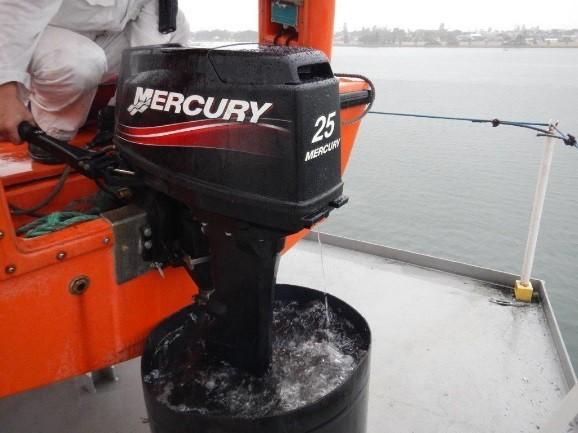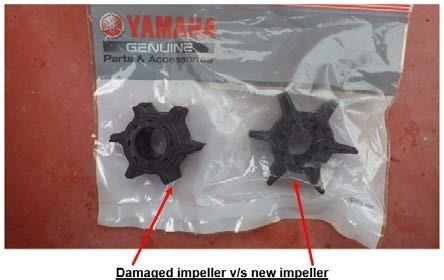Rescue boats
Safety of Life At Sea Convention (SOLAS) and the International Safety Management (ISM) Code require that ships’ crews are familiar with the operation and maintenance of emergency equipment, including rescue boat outboard motors. The ISM Code, under element 10.3, requires that companies identify equipment which, if subject to a sudden operational failure, may result in a hazardous situation. This includes rescue boats. Specific measures should be provided in the Safety Management System (SMS) to ensure the reliability of such equipment.
The ship’s SMS should ensure that effective maintenance procedures for rescue boats inboard and/or outboard motors are developed and included in the ship’s planned maintenance system. The manufacturer’s instruction manuals must also be available on board, as should a full inventory of the manufacturer’s recommended spares, such as fuel and oil filters, sparkplugs and water pump impeller.
A rescue boat is designed to rescue people in distress and to marshal survival craft. Masters have the responsibility for ensuring that rescue boats and associated equipment are always maintained in good working order.
Rescue boats may be either of rigid or inflated construction or a combination of both and are fitted with an inboard engine or outboard motor. The most common type of propulsion system used for a rescue boat is a petrol-driven outboard motor.
Operating and maintaining rescue boats – cooling water
Outboard motors are not designed to be operated without cooling water, even for short periods of time, unlike inboard engines which are designed to be capable of operating for not less than 5 min after starting from cold with the lifeboat out of the water (International Life- Saving Appliance (LSA) Code Chapter IV/ 4.4).
Outboard motor cooling water circulation is provided by a cooling water pump incorporating a rubber impeller and is confirmed during operation by a jet of water through a tell-tale hole located below the power head.
While proper procedures should be followed during routine testing and operation of outboard motors, AMSA Port State Control Officers (PSCOs) have observed that some crew operate the motor without any cooling water, which will result in damage of the water pump and possibly result in failure. When AMSA PSCOs observes this, the unsafe action is stopped by the PSCO.
Even testing using an external pressurised water supply has limitations, as these do not demonstrate that the water pump can take suction and circulate water through the motor.
An effective operational test is to submerge the motor leg in water to a depth which will cover the inlet ports. When the motor is started, the pump circulates water through the motor and out through the exhaust outlet. The pump condition and circulation are verified by observing the cooling water flow through the water flow indication (tell-tale) hole as indicated in Figure 1. The manufacturer’s advice with respect to flushing of cooling water passages with fresh water after use must always be followed.
Figure: 1

During inspections of outboard motors, AMSA PSCOs have found various defects including:
- blocked cooling water inlet mesh/ports;
- tell-tale holes blocked by salt deposits, broken pieces of rubber or by paint;
- worn out impellers (Figure 2);
- salt water deposits in cooling water passages.
All these defects could lead to serious engine damage due to overheating.
Figure: 2

Operating and maintaining rescue boats – fuel and oil
Rescue boats have either 2-stroke or 4-stroke petrol (gasoline) outboard motors (diesel outboard motors are available but not common). Use of improper fuel can damage the engine or result in starting difficulties.
AMSA PSCOs have found that manufacturer’s operating manuals are not always available, and crew are unsure of the type of outboard motor fitted and its associated systems. 4-stroke motors require no mixing of oil and fuel. Some 2-stroke designs use oil injection systems, while others require pre-mixing of oil and fuel.
Fuel problems are the most common cause of an engine failing to start. Generally, the fuel is either too old, contaminated, not the correct mix, or may not be able to be ignited due to the spark plugs being fouled by oily residue.
Sufficient fuel (for maintaining a speed of at least 6 knots for a period of at least 4 hrs) must be carried on board and stored in approved containers. Fuel systems are to be approved and fitted tanks are to be specially protected against fire & explosion. (LSA Code Chapter V/ 5.1.1.8).
Questions relating to this information can be directed by email to AMSAConnect.